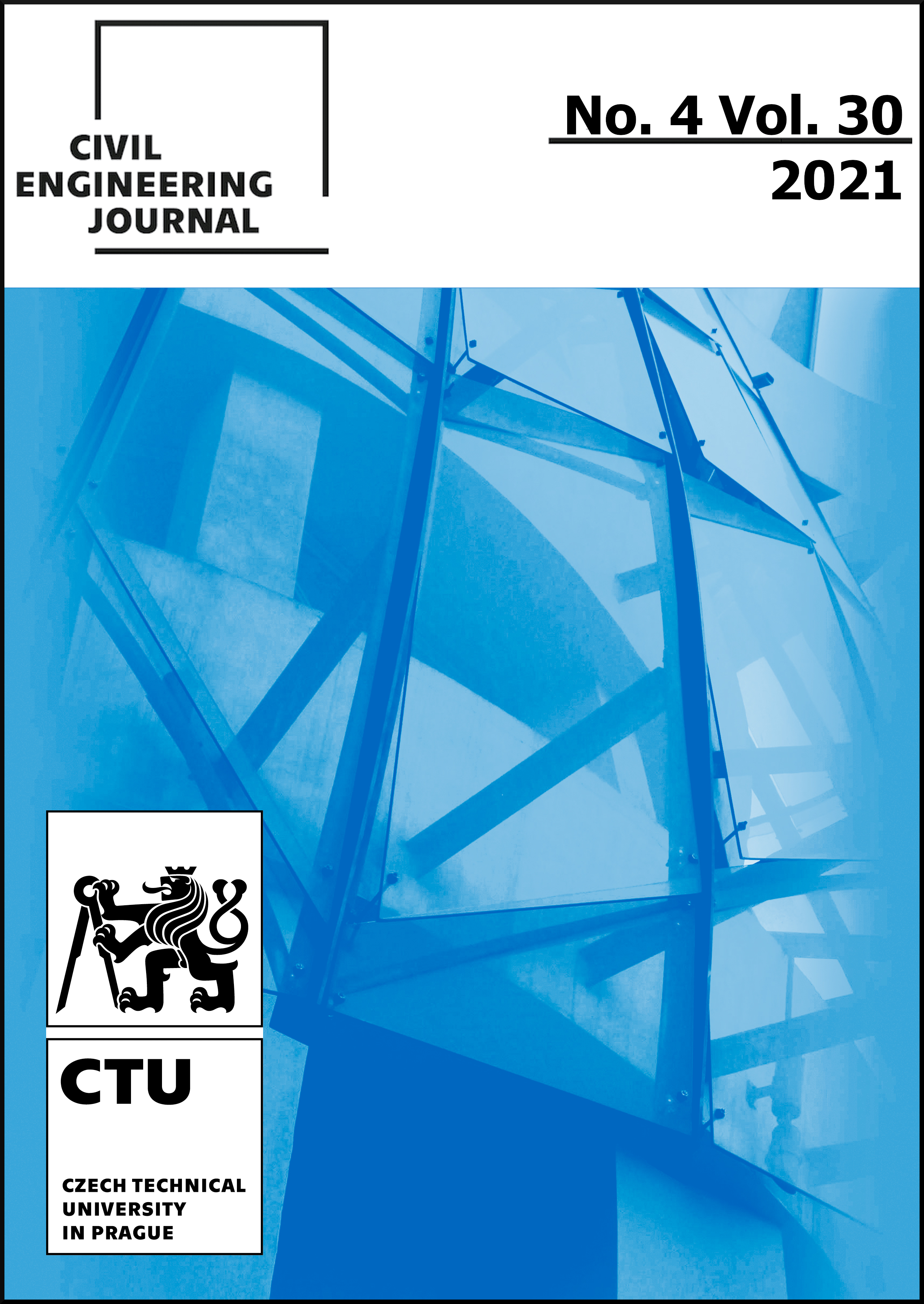EFFECTS OF SHEAR WALLS ON A TYPICAL FOUR-STORY REINFORCED CONCRETE STRUCTURE SUBJECTED TO SEVERE EARTHQUAKE EVENTS
DOI:
https://doi.org/10.14311/CEJ.2021.04.0060Keywords:
Modal, Nonlinear, Time History, Dynamic Analysis, Denali, Reinforced Concrete Structure, Shear Walls, SAP2000Abstract
Various seismic-resistant design methods are used to ensure the stability of multi-story buildings against lateral forces caused by earthquakes. Utilization of reinforced concrete shear walls is one of the most reliable methods of design and construction of earthquake-resistant buildings because it increases structural resistance to lateral loads and stiffens and strengthens the structure, thereby minimizing earthquake-induced damages. This paper investigates the beneficial effects of using shear walls in the structural design of a typical low-rise building to improve its resistance to earthquake events. To this end, a four-story reinforced concrete structure is modeled first without shear walls, then with the addition to shear walls. The 2002 Denali Alaska earthquake is used as an example of a severe seismic excitation because it is considered the most massive strike-slip earthquake in North America in almost 150 year. SAP2000 is used to perform the dynamic analysis. In order to obtain an accurate representation of the structure’s behavior, response modal nonlinear time-history dynamic analysis is utilized to analyze and compare the response of the building with and without shear walls. Study results showed that shear walls are very effective in achieving compliance with seismic design codes. In addition, the use of shear walls significantly reduces the shear stresses, bending moments, and displacements of the various members of the structure.
Downloads
References
J. Felber, Applied time history processing and interpretation: strong motion record manipulation for dynamic analysis with tips and tricks for data evaluation. Vancouver, British Columbia: EDI Experimental Dynamic Investigations, Ltd., 2021.
Schueller, Wolfgang. Building Support Structures: Analysis and Design Using SAP2000 Software. Berkeley, CA: Computer and Structures, 2021.
S. Bhat M, N.A.P. Shenoy, A.U. Rao, Earthquake Behaviour of Buildings with and without Shear Walls, IOSR Journal of Mechanical and Civil Engineering (IOSR-JMCE). (n.d.) 1–6.
P.P. Chandurkar, P.S. Pajgade, Seismic Analysis of RCC Building with and without Shear Wall, International Journal of Modern Engineering Research (IJMER). 3 (2021) 1–6.
Kurma, G.S. Vignan, T.S.K. Teja, Non linear Analysis of Multistoreyed Building with and without Shear Wall, International Journal of Engineering Research And. V7 (2021).
K. Tidke, R. Patil, G.R. Gandhe, Seismic Analysis of Building with and without Shear Wall, International Journal of Innovative Research in Science, Engineering and Technology. 5 (2021) 1–7.
Sanjeev, Lokesh, S. Patil, L. Shastri, Dynamic Analysis of Multi Storied Building with and without Shear Wall and Bracing, GRD Journals- Global Research and Development Journal for Engineering. 2 (2021) 1–8.
2002 M7.9 Denali Fault Earthquake: Alaska Earthquake Center, 2002 M7.9 Denali Fault Earthquake | Alaska Earthquake Center. (n.d.).
Alaska editorials, The Washington Times. (2021).
S. Xiao, “Fundamental of Vibration.” Iowa. http://user.engineering.uiowa.edu/~sxiao/class/058-153/lecture-18.pdf.
Downloads
Published
Issue
Section
License
Copyright (c) 2021 Author

This work is licensed under a Creative Commons Attribution-NonCommercial 4.0 International License.
Authors who publish with this journal agree to the following terms:
- Authors retain copyright and grant the journal right of first publication with the work simultaneously licensed under a Creative Commons Attribution License that allows others to share the work with an acknowledgement of the work's authorship and initial publication in this journal.
- Authors are able to enter into separate, additional contractual arrangements for the non-exclusive distribution of the journal's published version of the work (e.g., post it to an institutional repository or publish it in a book), with an acknowledgement of its initial publication in this journal.
- Authors are permitted and encouraged to post their work online (e.g., in institutional repositories or on their website) prior to and during the submission process, as it can lead to productive exchanges, as well as earlier and greater citation of published work (See The Effect of Open Access).
How to Cite
Accepted 2021-11-01
Published 2021-12-31











